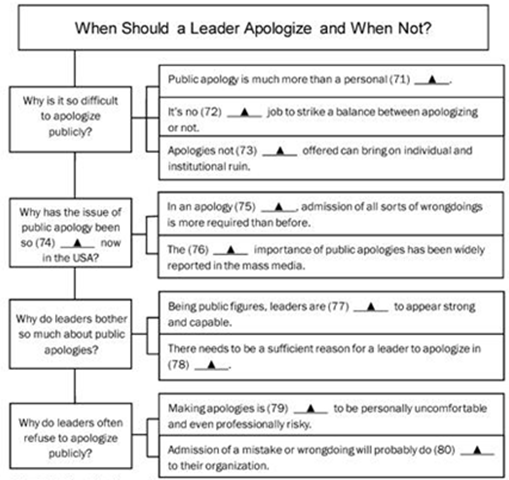6£®Mrs Bennet£¬Pride and Prejudice
Jane Austen described Mrs Bennet as"a woman of mean understanding£¬little information£¬and uncertain temper£¨Æ¢Æø£©"£ºshe topped your list of the least favorite female family heads£®With her single-minded devotion to marrying off her daughters£¬she is one of literature's parents involving themselves in their sons'or daughters'private lives£®And at least she pays attention to her daughters£®Whatever one might lay at her daughters'door£¬she defends them£®
Helen Graham£¬The Tenant of Wildfell Hall
The second and final novel by Anne Bront was so shocking that after Anne's death£¬her sister Charlotte prevented its re-publication£®Published for the first time in 1848£¬it told the story of a woman who escapes her alcoholic husband to protect her young son£®In fleeing her husband£¬Helen was not just challenging social structures£¬she was breaking the law£ºat the time£¬a married woman had no independent legal existence£¬and by taking her child with her she was likely to be punished for kidnapping£¨ÓÕ¹Õ£©£®Helen's actions didn't just establish her as a good mother£» they helped to cause a movement£®
Marilla Cuthbert£¬Anne of Green Gables
The adoptive mother of orphan Anne makes herself known as a softy through the course of the 1908novel£ºso much so that Margaret Attwood has claimed that Marilla is the true central character£º"Her growing love for Anne£¬and her growing ability to express that love-not Anne's duckling-to-swan act-is the real magic transformation£®Anne is the catalyst£¨´ß»¯¼Á£© who allows the strict Marilla to finally express her long-buried softer human emotions£®"
Mrs Waterbury£¬The Railway Children
The Railway Children's female family head is"a very real mother£¬strong but also easily hurt£®"Presenting an idealized£¨ÀíÏ뻯£© vision of childhood£¬yet the novel contains a tension between appearance and reality-which some have said reflects its author E Nesbit's personal life£®Her husband had an ongoing affair with her best friend£¬who bore him two children that Nesbit raised as her own£®Jenny Agutter has said£º"Nesbit's life was always unstable£®What saved her was her belief that things would work out in the end ¡Against the background of her own tense and complex family life£¬she wrote stories about families that were joined perfectly together£®"
65£®The passage mainly discussesB in literature£®
A£®families
B£®mothers
C£®emotional life
D£®parent-child communication
66£®Which of the following is TRUE about the four characters in the novels mentioned in the passage£¿A
A£®Mrs Bennet is a most controlling person£®
B£®Helen Graham is a person to give up easily£®
C£®Marilla Cuthbert is hard to get along with£®
D£®Mrs Waterbury is poor at holding together a family
67£®According to the writers mentioned in the passage£¬we can infer thatC£®
A£®Jane Austen was good at writing detective stories
B£®Anne Bront wrote three novels altogether all her life
C£®E Nesbit was looking forward to having one harmonious family
D£®Margaret Attwood was very popular with readers of the early 20th century
68£®Which of the following can we recommend if anyone wants to read a novel about the sweetest expression of family love£®C
A£®Pride and Prejudice£®
B£®The Railway Children£®
C£®Anne of Green Gables£®
D£®The Tenant of Wildfell Hall£®
·ÖÎö ±¾ÎĽéÉÜÁËPride and Prejudice£¬The Tenant of Wildfell Hall£¬Anne of Green Gables£¬The Railway ChildrenËı¾²»Í¬µÄÎÄѧ×÷Æ·ÖÐËÄλÔâÓö²»Í¬µÄĸÇ×£¬²¢½éÉÜÁËÕâËÄλĸÇ×µÄʼ££®
½â´ð 65£®B£®Ï¸½ÚÀí½âÌ⣮ͨ¹ý×ÐϸÔĶÁÈ«ÎÄ£¬Ò×ÖªËIJ¿ÎÄѧ×÷Æ·Öн²µÄÊÇËÄλĸÇ×£®¹ÊÑ¡B
66£®A£®ÍÆÀíÅжÏÌ⣮´ËÌâ¿ÉÒÔʹÓÃÅųý·¨£®¸ù¾ÝÎÄÖÐ"it told the story of a woman who escapes her alcoholic husband to protect her young son£®"¿ÉÖªËýÊÇһλÒâÖ¾¼á¶¨µÄĸÇ×£¬¶ø·ÇÈÝÒ×·ÅÆú£¬¹ÊB´í£»¸ù¾ÝÎÄÖÐÄÚÈÝ£¬ÎÞ·¨ÍÆÖªMarilla CuthbertÊǸöÄÑÒÔÏà´¦µÄÈË£¬ÊôÓÚÎÞÖÐÉúÓУ¬¹ÊC´í£»Í¬ÀíD´í£®¹ÊÑ¡A£®
67£®C£®Ï¸½ÚÀí½âÌ⣮ÎÄÕÂ×îºóÒ»¶ÎÖн²"some have said reflects its author E Nesbit's personal life£®"£¬ÊÇ·´Ó³×÷ÕßNesbitµÄ¸öÈËÉú»î£¬¿ÉÒÔ¿´³ö×÷ÕßÏ£ÍûÒ»¸öºÍгµÄ¼ÒÍ¥£®¹ÊÑ¡C£®
68£®C£®×ÐϸÔĶÁÈ«ÎÄ¿ÉÖªAnne of Green GablesÊÇΨһһ±¾¹ØÓÚ¼ÒÍ¥°®ÇéµÄ×îÌðÃ۵ıí´ïµÄÊ飮¹ÊÑ¡C£®
µãÆÀ ±¾ÎÄÊÇ¿¼²ìѧÉúÎÄѧ×÷Æ·ÀàÔĶÁÀí½â£¬ÕâÀàÎÄÕ³£Éæ¼°ÎÄÕ½ÚÑ¡£¬ÎÄÕÂÆ·¶ÁµÈµÈ£®ÕâÀà²ÄÁϵÄÃüÌâÖصãÍùÍùÂäÔÚÖ÷Ö¼´óÒ⣬ÒÔ¼°Ï¸½ÚÉÏ£®



 º®¼ÙѧÓëÁ·ÏµÁдð°¸
º®¼ÙѧÓëÁ·ÏµÁдð°¸
